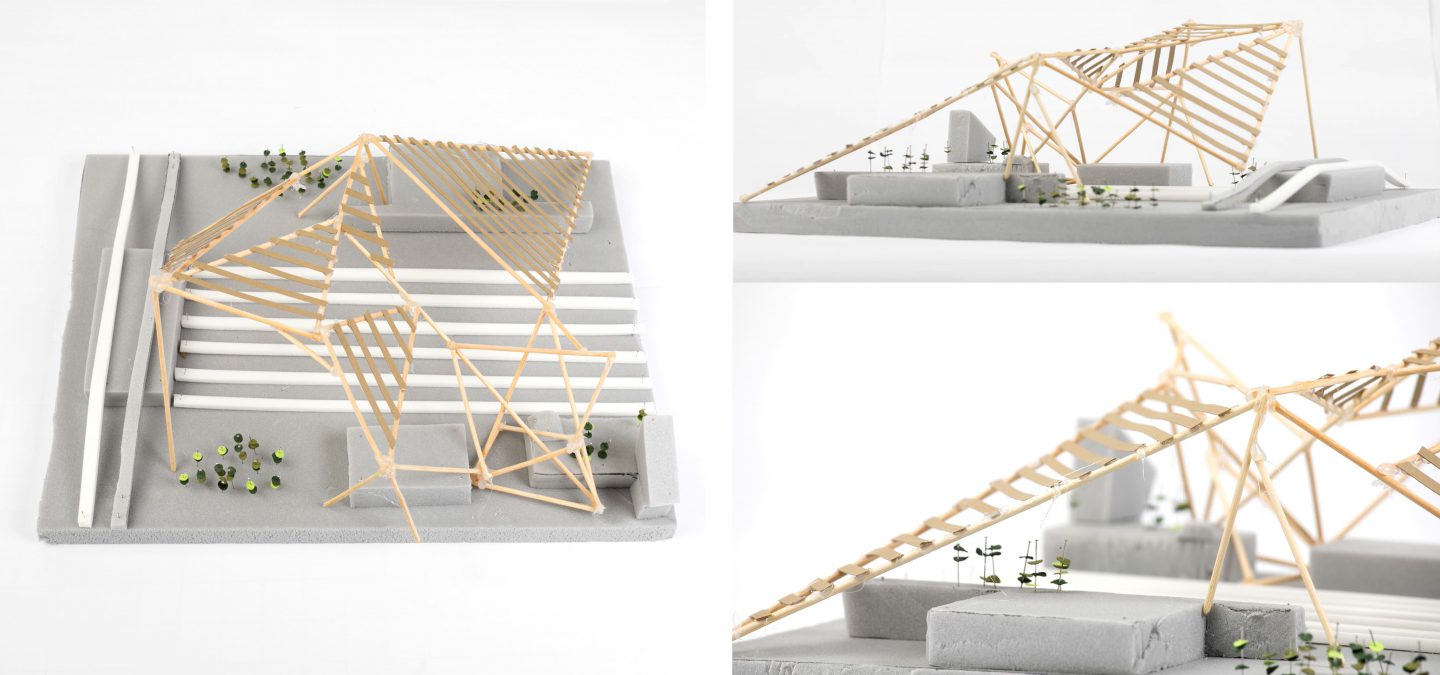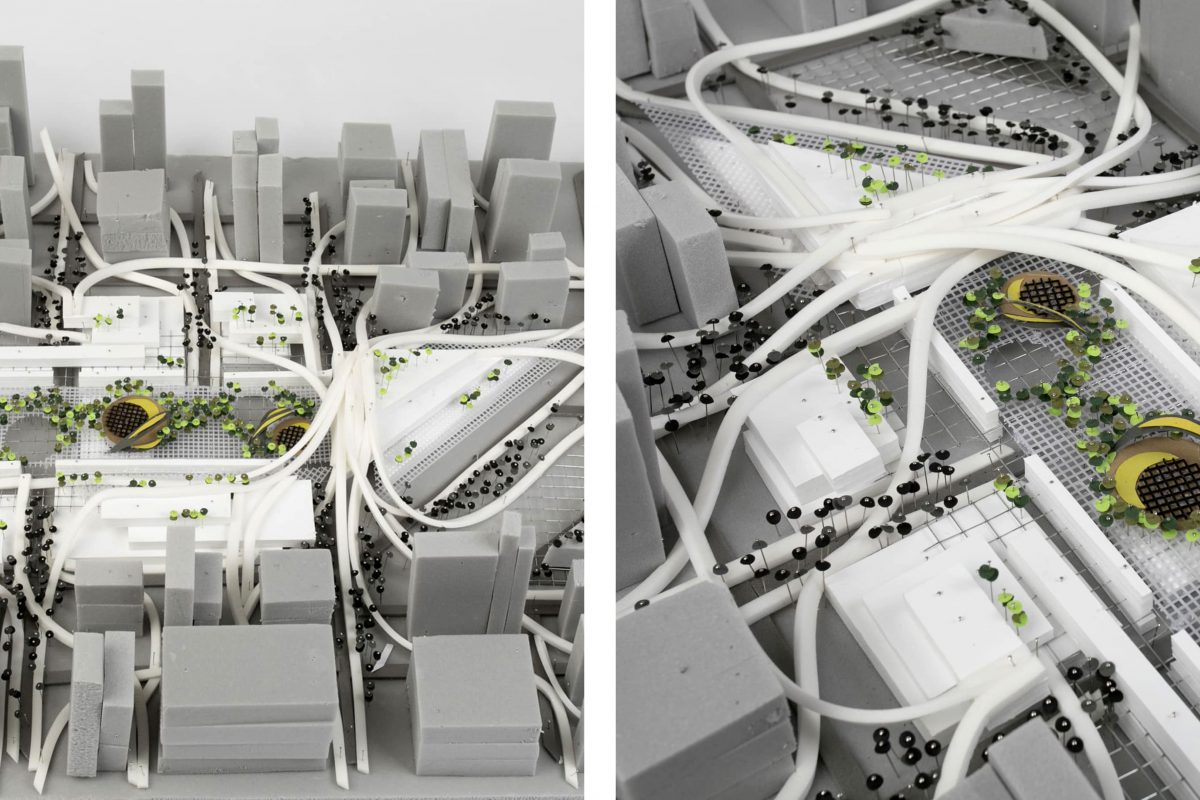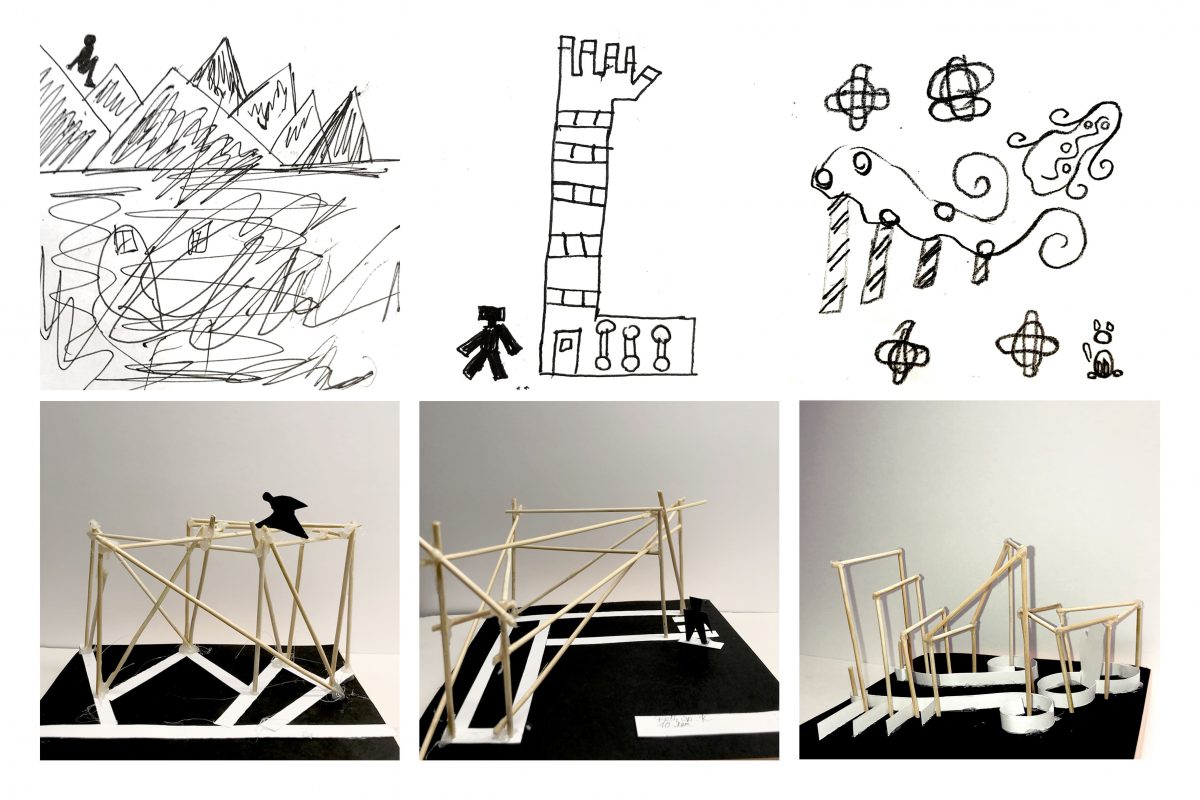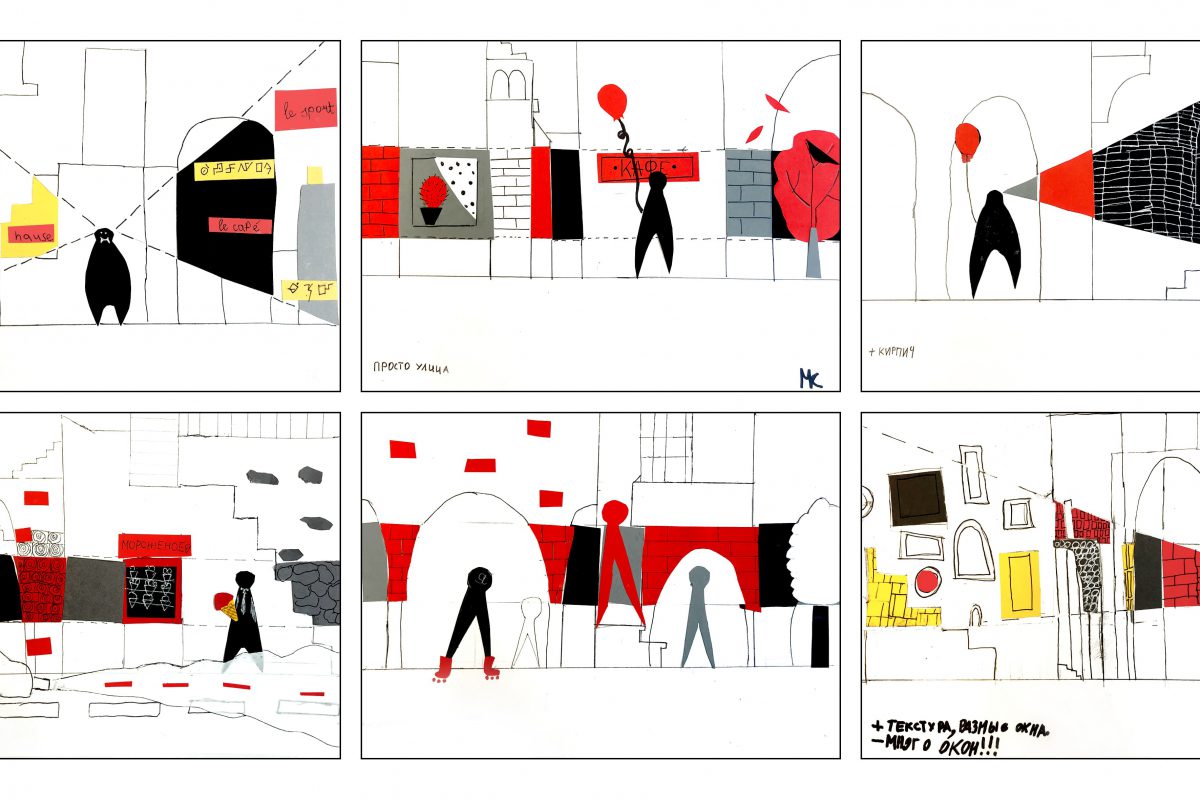
Keep up with our latest news and projects!

We will describe three different educational programs that encourage children to reflect on public spaces: to tell stories, to share feelings, and to design spaces. The crucial role of educators and architects is to create a safe environment that motivates children to think, experiment and design.
All programs were developed at Young Architects Society, architecture and design school based in Saint-Petersburg, Russia.
A three-month educational architecture studio focused on the development of new concepts of urban spaces. The idea was to introduce children 12-16 y/o to the basics of architecture and urban design.
The first step was to analyse users and to program spaces. Young architects identified the most significant functions in the city from their perspective – education, creativity, technology, and animals. As we moved to the design process, the group discovered four principles to follow – interconnectivity, eco- friendliness, technologization, separation from cars and noise.
Teenagers talk about interconnectivity from different perspectives.
They propose to foster communication between users, community, and government, to design public spaces for effective social interaction and to create an interconnected multilevel network of pedestrians’, vehicles,’
bicycles’ and skaters’ routes. “Communication is a basic need for everyone. Connecting with people of same interests is essential. Communities in most cases are small and separated from each other.”- says Sonya Labzovskaya, 16, the author of the project “Creative District and Art Academy”.
While virtual network and technological innovation are already redefining our urban experiences, children are interested in re-thinking it as a positive force. “Let’s build glass cubes on the streets for socializing with Wi-Fi and climate control, that will be warm in winter and cool in summer”- proposes Vasya, 13.
Living in a “jungle” is a dream of kids who grow up in a busy city with movement and fuss. Young architects plant trees on the roofs and along the highways, create tree barriers for traffic pollution and noise, separate pedestrians from cars while waiting for electrical vehicles. Traffic, as we know it today, is indeed an obstacle in the city at the eye level for kids.
 Creative District and Art Academy / Sonya, 16 years old
Creative District and Art Academy / Sonya, 16 years old
Together as a group of kids 8-10 y/o and architects we created a phantom vision of a perfect urban experience.
The 4-hour workshop was held to help children understand their feelings of the city and to create a new sensorial scenario.
Primarily, we determined that in an ideal city children wish to be close to nature, safe, physically comfortable (neither too cold nor too hot, neither too tired of walking nor too hungry or thirsty) and visually engaged.
The ultimate goal of the workshop was to name, visualise and scale particular factors and elements that evoke these feelings. Most common are:
– The presence of nature, a lot of trees and tree canopies along the streets, fruit trees;
– Clear visual guidance, distinctly visible car lanes, separate lanes for pedestrians, bikes and clear visual boundaries for play;
– Variation and the scale of the surroundings, narrow streets and cozy houses: “Long facades are boring, and it takes a long time to walk around.”
– Interactive functions and restaurants on the plinth level, pleasant smells;
– Familiarity and connection between people, a sense of community: “I prefer living in a place where neighbours know each other; I feel safe to play alone outside.”
– An absence of fuss and noise; “Being surrounded by thousands of people in a busy street in a rush-hour feels insecure and overwhelming.”
– Inclusion in and visibility of the street or city activities, such as festivals, markets, fireworks;
– Sufficient light, especially in a northern city with a short daylight period in winter;
– Moderate climate; or places to hide in uncomfortable weather;
– Response to stories and fears: “City should have a full WI-FI coverage, in case there’s a robbery I can contact the police.” “Houses should not be very high because in case of fire people won’t be able to run outside fast.”
– Music in the streets;
Models and drawings show the abstract image of the feeling evoked and the significance of the sensation or a factor for a child.

The idea of the workshop is to visualize a flash of the city at the eye level on three different scales – the context, the street, and the building.
A curious discovery is the way children perceive space at the eye level. It is a subjective matter: one kid is just noticing particular details that are of his interest, while another is paying attention to the whole plinth level and paving textures.
Colour indicates a subjective perception of space at the eye level, while insignificant surroundings are blank.
 Six different flashes of the eye level by six young architects / 4-hour architecture workshop for children 8-10 y/o.
Six different flashes of the eye level by six young architects / 4-hour architecture workshop for children 8-10 y/o.
Remember, that kids’ perception of urban space is strongly affected by their experience as well as by the social, economic, cultural and climatic context they grow up in. Therefore, it is beneficial for each municipality to introduce workshops and participatory design processes that include children locally in schools, architecture studios, and planning committees. A collaboration of participants of all ages and backgrounds strengthens community ties and relationships, allows design professionals to expand their practice through the exchange of ideas and empowers children to participate in shaping their environment.
Moreover, regular architecture activities teach a child to think critically and creatively, inspire an open-minded and a multifaceted perception of reality. Hands-on experience, confidence, and knowledge gained through early architecture education may encourage one to actively shape the surrounding space through any professional field in the future.
Including children in a real-life design process is an equally powerful tool to create child-friendly urban landscapes and to foster a higher level of consciousness from an early age.
This article belongs to a series of stories about the city at eye level for kids! You can access the full book online in PDF or pre-order your hardcopy to be delivered to your home.
Get your book here